2024 Husqvarna Svartpilen 401 & Vitpilen 401 Review
Review by Kris Hodgson
The last-gen Svartpilen 401 won wide accolades as a decked out, value packed proposition for new riders and I was eager to find out how much better the new bike was over my own ’21 model.
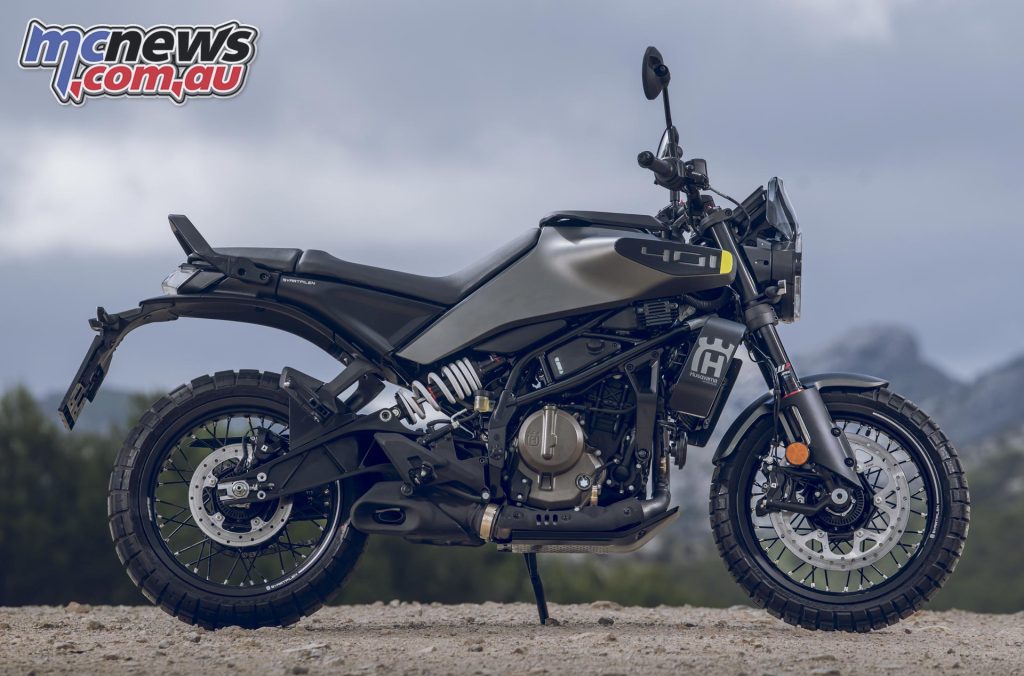
With 90 percent new parts for 2024, it turns out there’s a huge leap forward between old and new. The heritage of the previous bike is still there, but after about 120 km on frankly amazing Spanish roads, it’s hard to point to an area lacking improvement on the Svartpilen 401.
I’d grabbed the Svartpilen 401 first, leaving the Vitpilen for the afternoon, and spent two-thirds of the day on the bike, the improvements proving significant quickly.
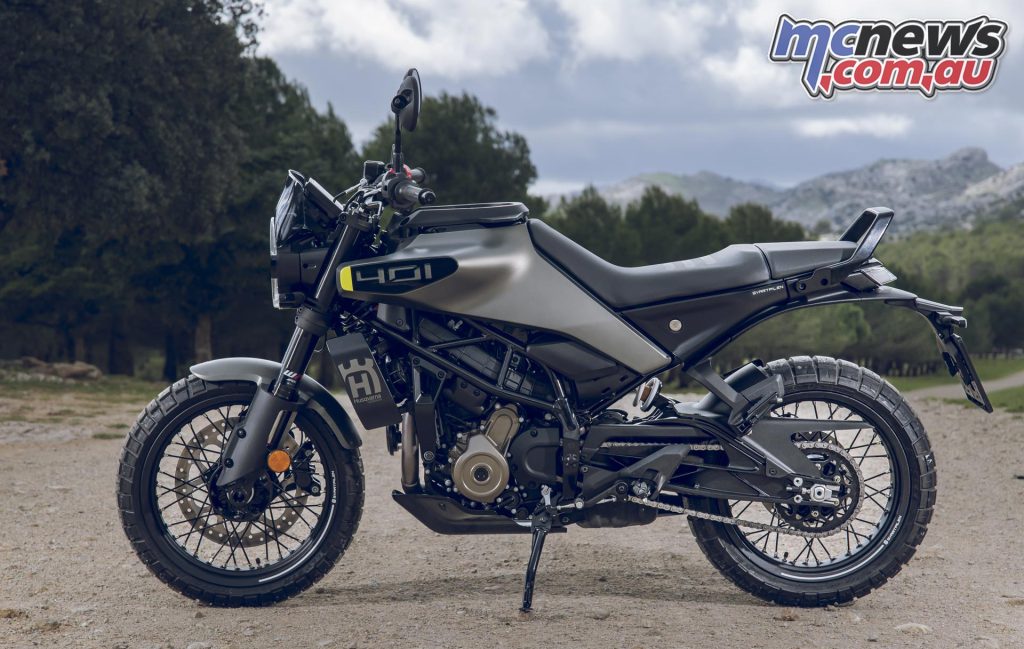
The new bike’s lower seat is a bit more proportional and natural, with the added bonus of being more likely to suit short riders—820 mm is still tallish but an improvement. The bike has a bit more presence, too, thanks to beefed-up looks. Add the rugged Rally STR tyres and it’s an eye catching package.
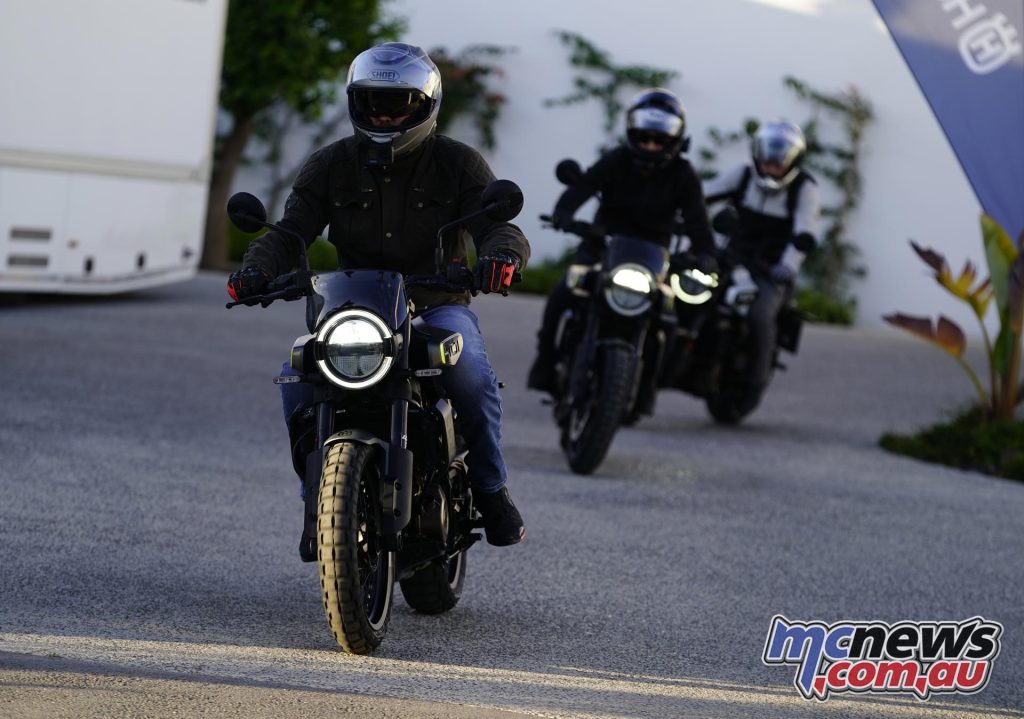
Styling… I like it, but the bike has always been bitsy and unusual. I feel like the Svartpilen is cleaner now, with a nice straight line from headstock through to rear axle, emphasised by the new bodywork. What I did look for and also notice was improved component quality. Plastics had better finish and edges, particularly. Switches are much better. The 2024 Svartpilen 401 seems more refined.
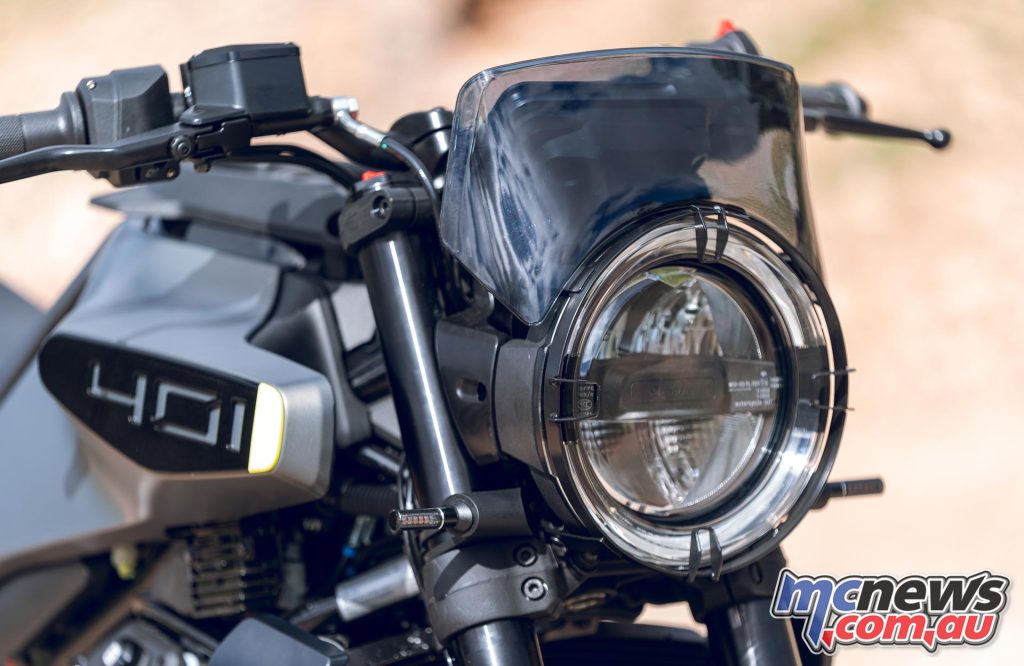
That refinement carries over to the ride, and this partnership with Bajaj is paying dividends. The larger new engine is shared with the KTM 390s, of course, but it’s a welcome update spurred on by Euro5+.
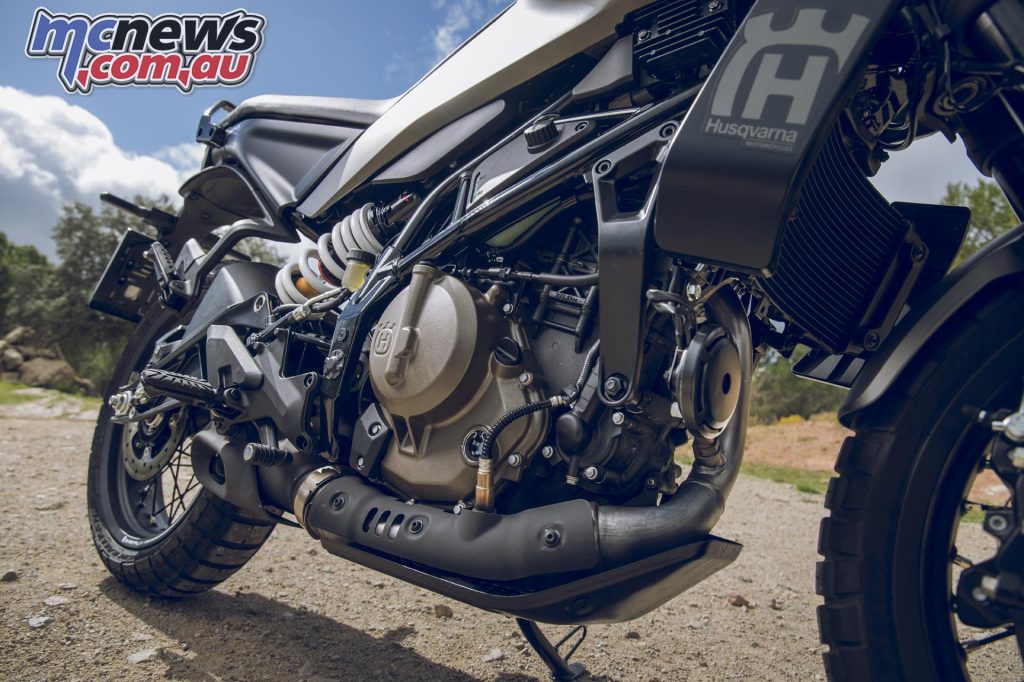
A blip of the throttle reveals a quick revving machine with a light flywheel effect, the revs dropping fast, but in the regular Road mode that initial throttle open is smooth and forgiving, maybe a tiny bit doughy just off closed. You shouldn’t stall the 401, and with a largely beginner centric market in Australia for this model that’s a plus. Running RbW, obviously that’s tuned in by design, and this usability is mirrored across the bike in all the changes.
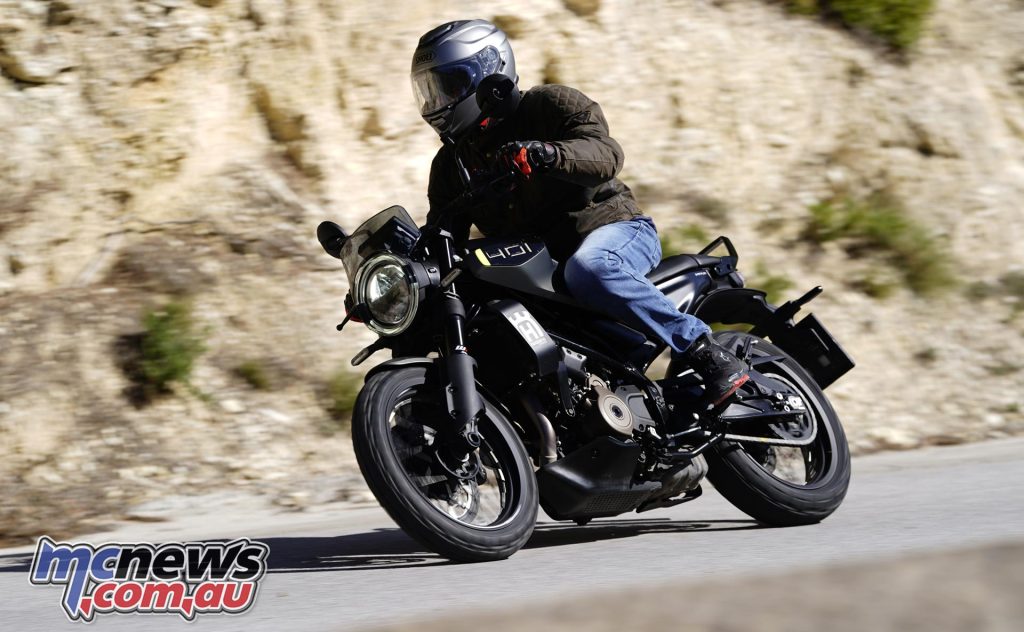
Setting off onto the well-surfaced roads in Spain, that engine is buttery smooth and eager. It gets you up to speed quickly, with shift assist making for easy clutchless shifts, I’d say 98% of the time—once I remembered to use it, of course. Being a bit harder on the gas is preferred here for optimal easy shift use. It is a cool inclusion – that some brands still struggle to offer standard on much pricier machines. That’s an ongoing theme with these 401s over most of the competition too.
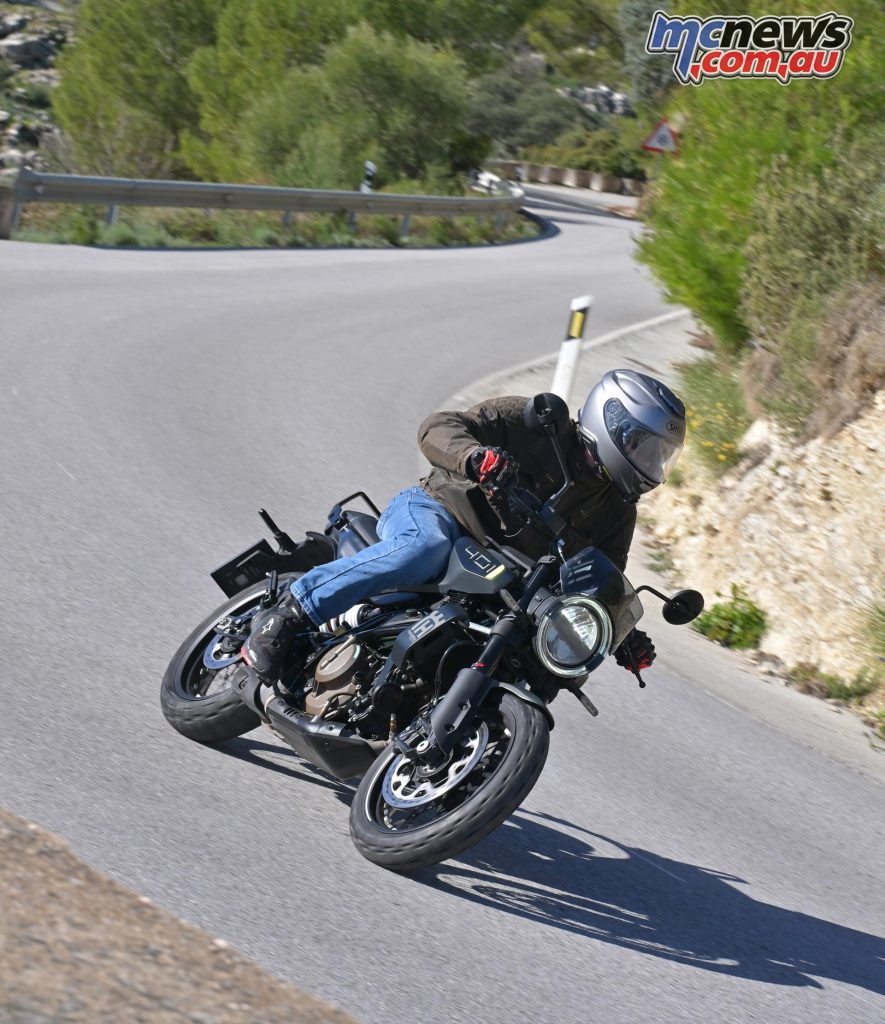
Power and torque is fairly linear, you will be using that gearbox but there’s a very wide ‘go’ zone, somewhat offset by revving through that range so quickly. This is not a lazy single, in fact the bike is very sporty, with peak performance pushed towards the A2 limit at 45 hp. Ignore the very visible shift light for too long and power will drop off, but overall this is a great little powerplant.
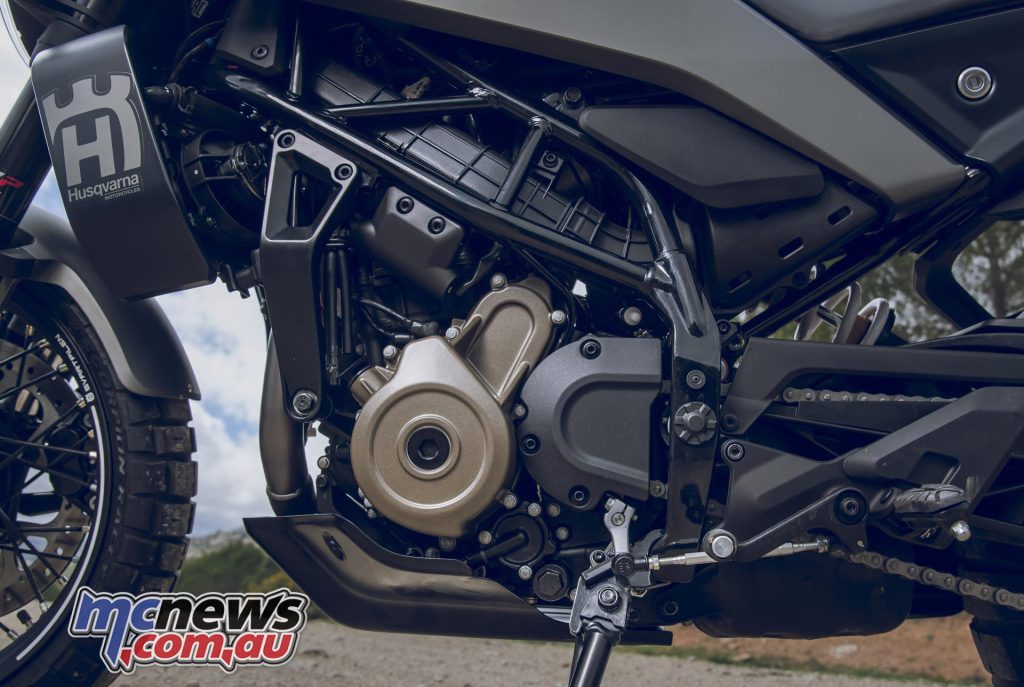
As a previous gen owner this engine is just better, but probably more importantly, it’ll be more confidence inspiring and usable for new riders. We didn’t do much in the way of slow speed traffic, but the photo stops, passes and riding through a few smaller villages did reveal an easy bike for stop and start situations, U-turns and similar. Being hard on the gas and on amazing roads helps, but initial feeling is that this will translate well to the more mundane and regular beginner riding duties too.
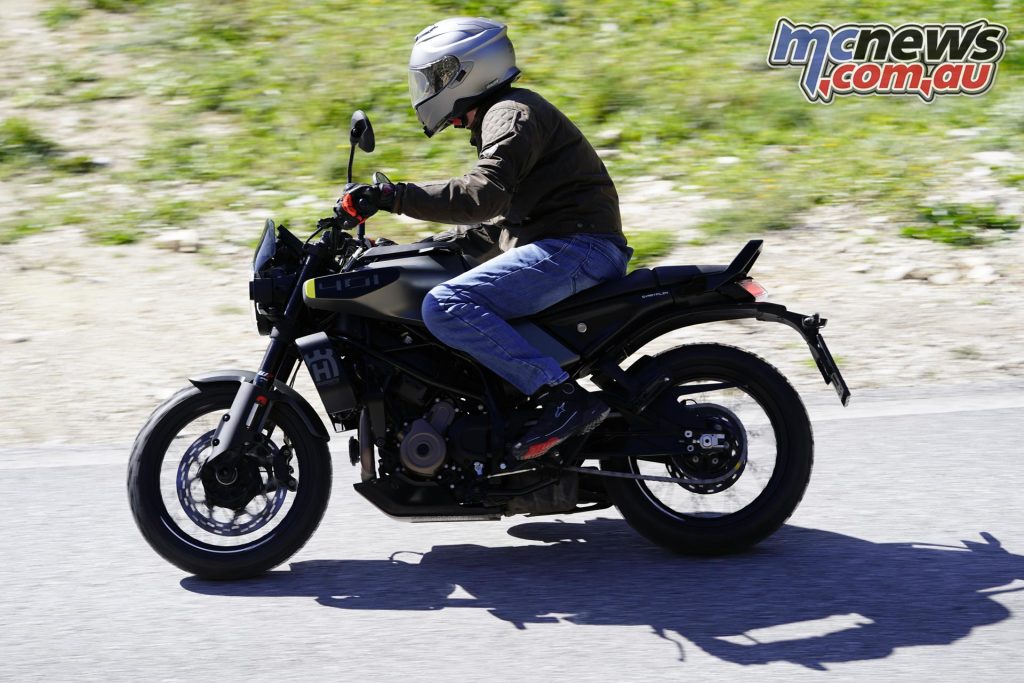
Highway cruising is also enormously better, sit at 100, 110, 120 or 130 and that engine remains smooth. No vibes. My ‘21 is frantic there by comparison, and while this isn’t a tourer, you can never tell what people will do on their bikes. I know I did quite a few 600 and even 900 km days on my first bike – a little 250, and I wouldn’t hesitate to do similar on the new 401. That seat, despite looking minimalistic, was also super comfy, as on the existing model.
Now, Spain’s roads put ours to shame, leading me to the chassis package. The new Svartpilen 401 is seriously good here. It has a new frame, swing arm, seriously impressive suspension, and a formidable brake setup.
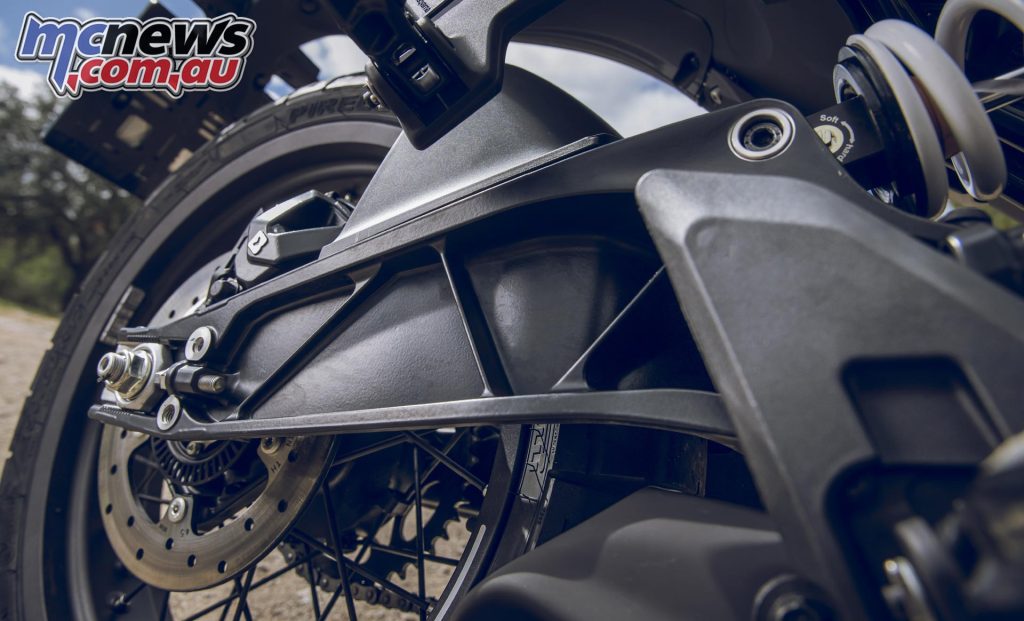
I expected the Svartpilen to fall somewhat into the Vitpilen’s road-rubber-shod shade here, but I didn’t find that to be the case at all later in the day. I’ll cover that comparison more in the Vitpilen section below however, and focus on the Svart here.
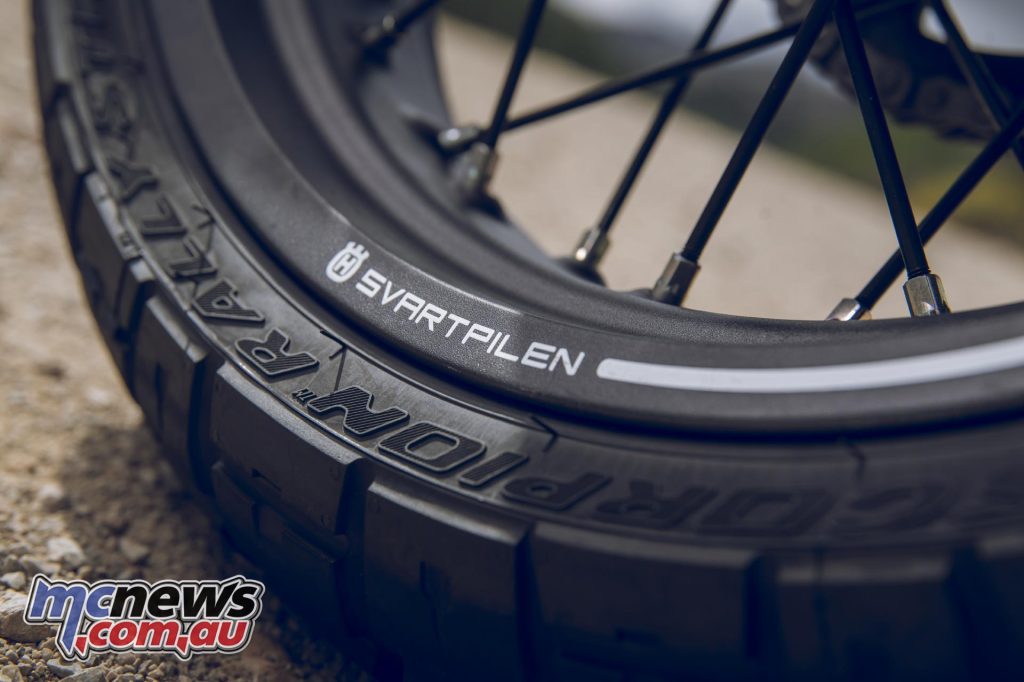
For stringing together fast sweeping corners the Svartpilen was breath-taking, the suspension was perfect for me at 75 kg. I was going to mess with the clickers, but it was just so good on the standard settings that there was no point.
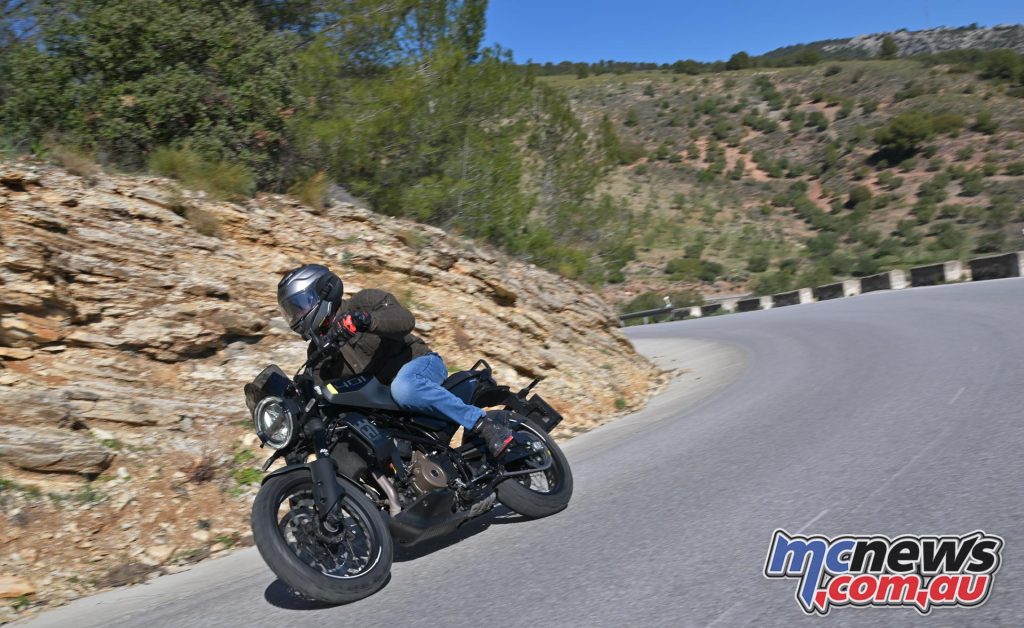
Is this partially down to the exceptional roads? Sure, but the WP Apex setup really shone. There did seem to be a significant difference between the Svartpilen and Vitpilen here, though, which had me checking the clickers on both to see if they were the same. (They were.)
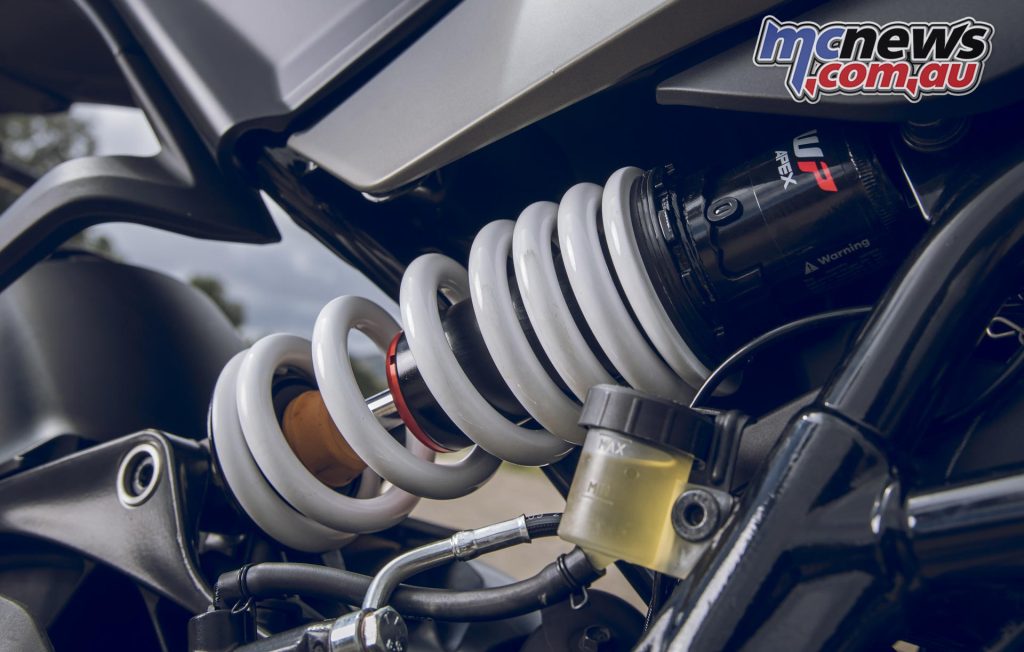
This is a beefy suspension set-up for a small bike, and the new off-set shock is well shown off and even more accessible for adjustment. Even speed bumps could be practically ignored, the Svartpilen 401 was so planted and controlled.
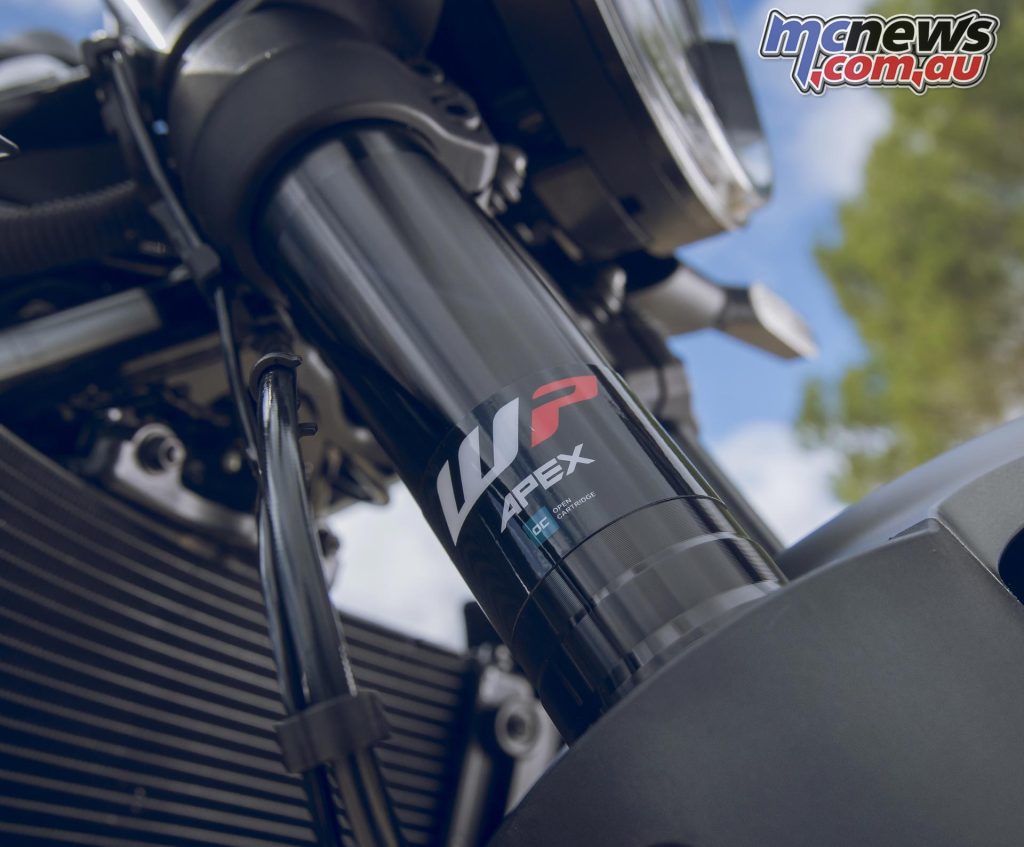
Husqvarna have simplified adjustment to suit less experienced riders, from 30 clicks to five, or essentially each adjustment point now is now worth six old clicks. I always adjusted my Svart three clicks at a time for trying to feel out improvements as someone not particularly good with the dark art of suspension adjustment, so this made totally sense to me.
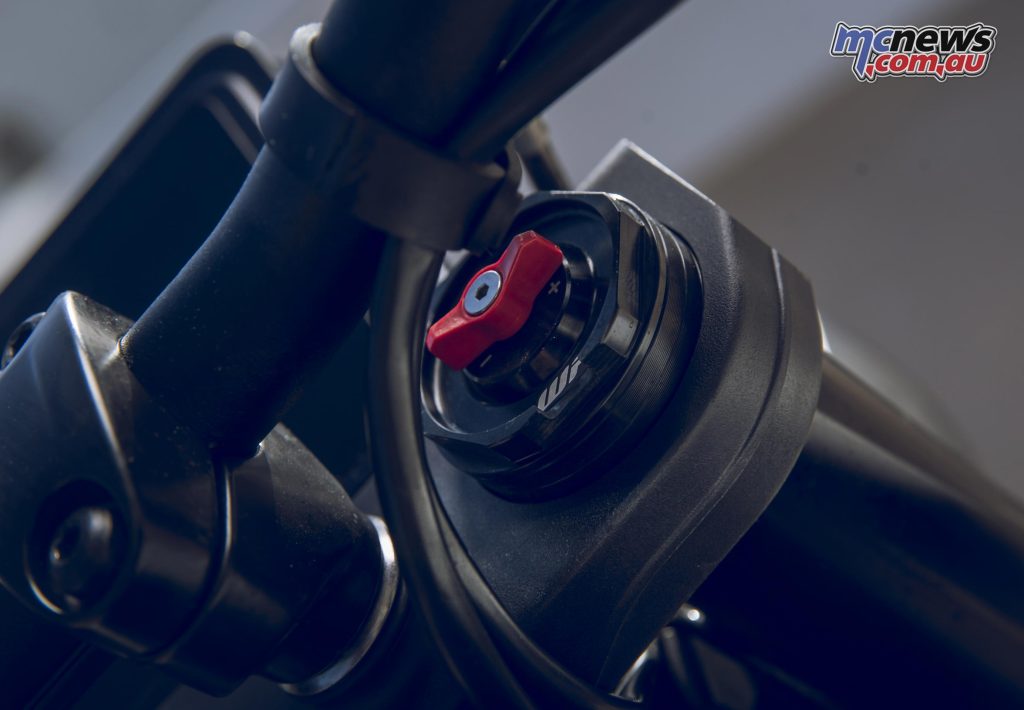
I even had that rear getting very light hard on the front anchors at times, but the Svartpilen 401 took that all in its stride. Even fallen rocks and rubble on the road were easily handled on the rare occasion I didn’t pick my line well enough in one section.
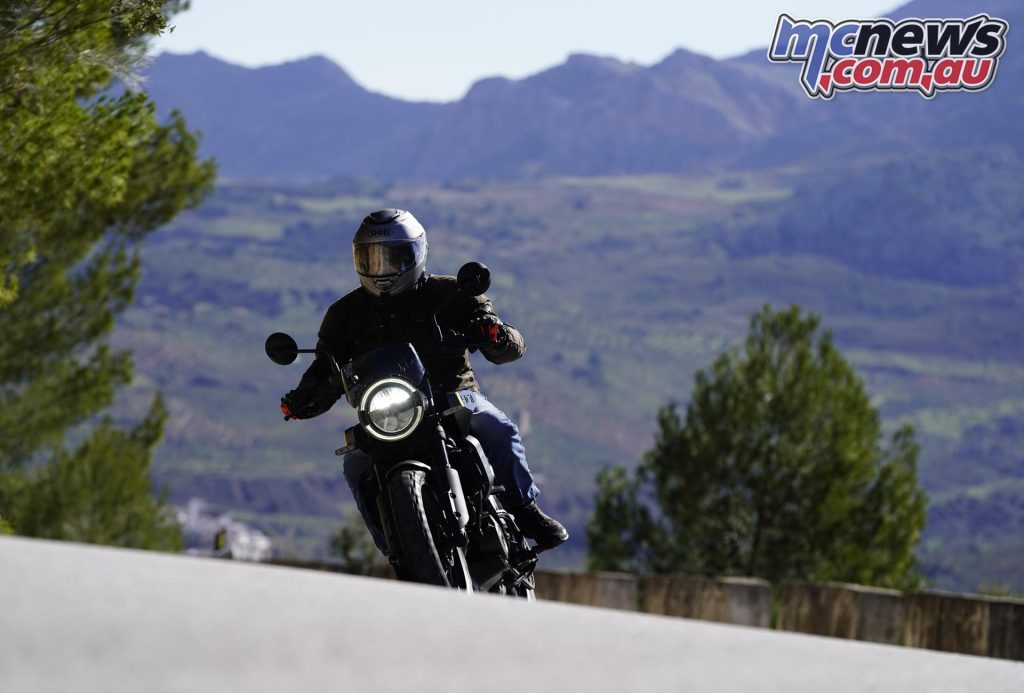
Of course handling has always been pretty sharp on the 401 and that’s retained, but with a 10 mm longer wheelbase and new swing arm, plus geometry tweaks, the bike is – as Husqvarna promised – more stable. I only saw 150-ish km/h at best and I heard someone else say 160. That felt plenty fast too, and this style of bike lends itself to giving a good feeling of speed even from more normal speeds of 90 km/h.
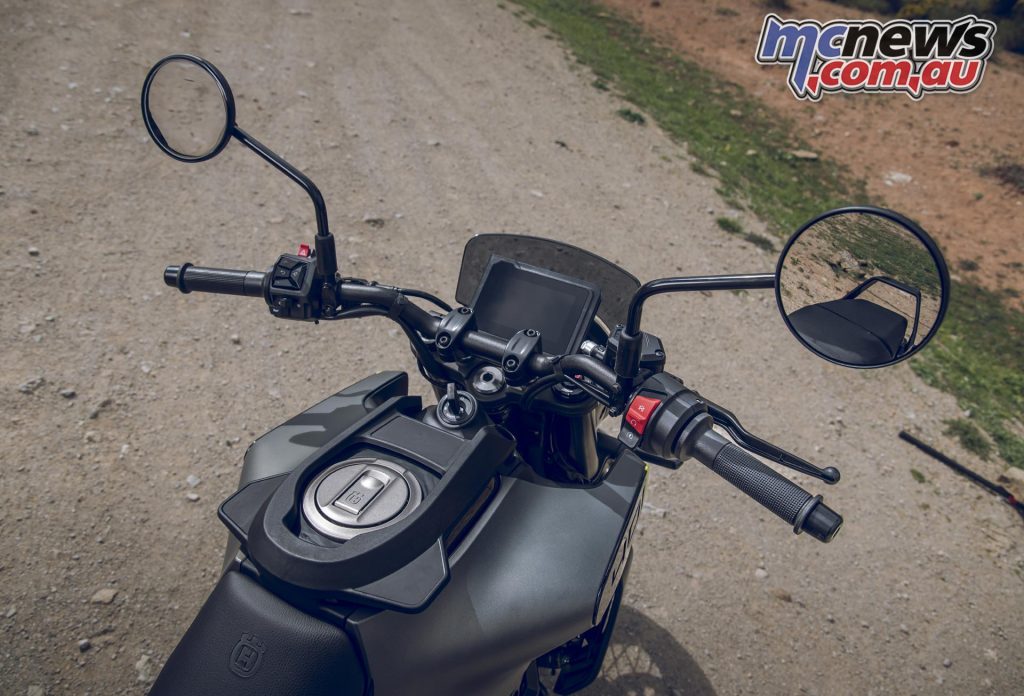
What do I mean by that? The bike feels fun having a thrash through the corners even at lower speeds, an obvious advantage of this more nakedbike-inspired machine. You don’t need to be at ridiculous speeds to have fun here. Top speed may be a little down on some of the competition, but I’ll take tractable power over top speed on a 400.
Handling was telepathic, with accurate and effortless turn-in and changes of direction as I tried to keep up with some very handy faster riders. Trailing the brakes in was just as good, especially after overtaking slower traffic into high-speed corners and needing to wash off a bit of speed as you turned in. Add that impressive engine punch, and the bike is a ripper, a simple joy to ride, and, for the price, incredible.
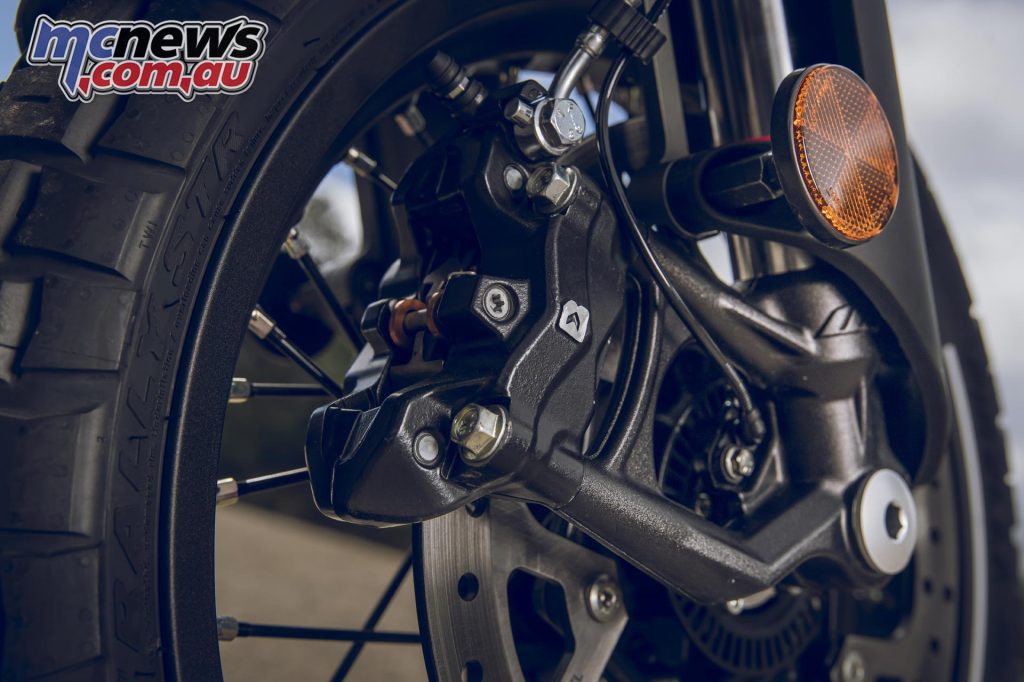
The Pirelli Rally STR tyres are also coming into their own, considering conditions were dry and mild for the day, with a cold start. They have great grip, ideal turn-in and feel, and are perfect for the bike and my lazy riding style.
I did have to slow my pace at one point through a particularly narrow section, with leaves and falling stones on the road and quite limited vision, but there wouldn’t have been a bike I’d rather be riding through there.
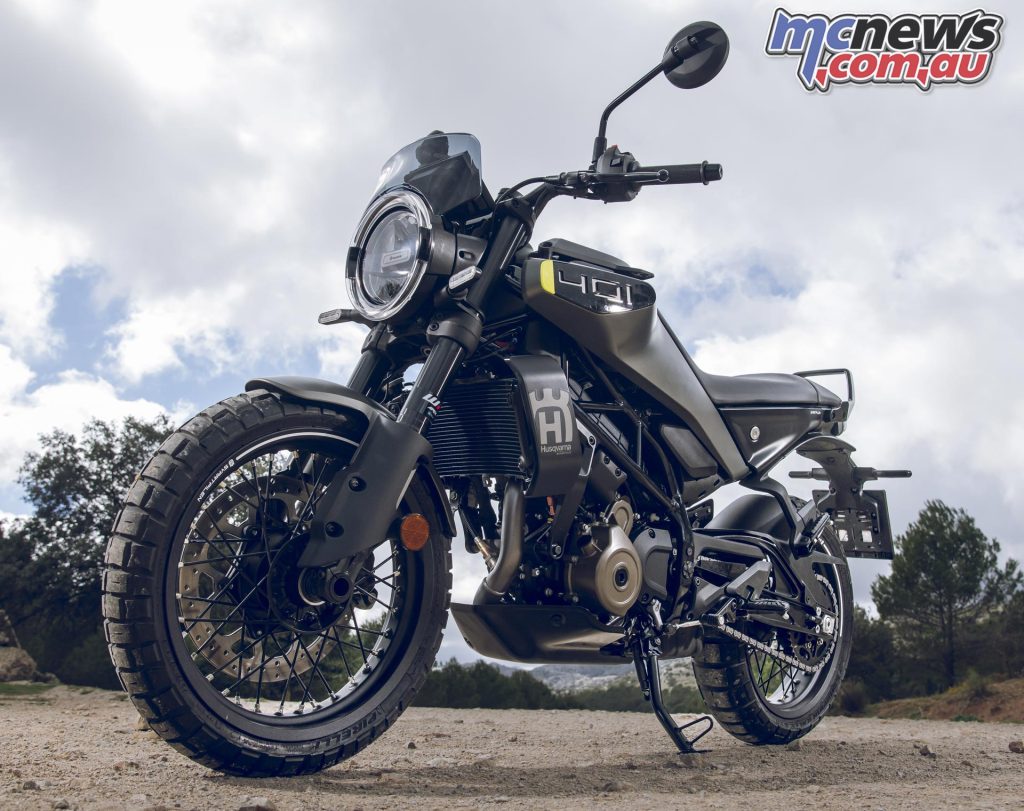
Taking a wrong turn into a tiny village did not help me keep up, nor did constantly reminding myself to keep right! Following other riders is significantly easier when you’re riding on the ‘wrong’ side of the road. Roundabouts, though, are super weird. Total lack of indicator use aside, driving standards in Spain put Australia to shame, from what little I saw.
The brakes were interesting in that they moved the disc to the right, apparently for looks. This also gives easier access for a disc lock, which in my tight little garage space at home has always been an issue I’ve noticed with my 401.
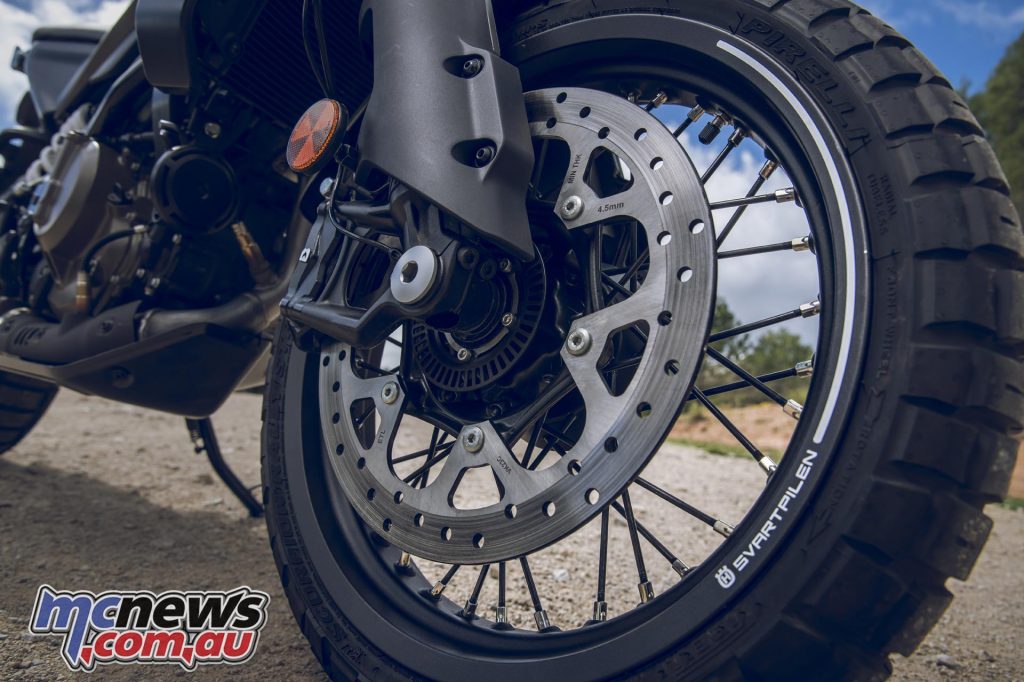
Front brake bite felt a bit more restrained than on my ’21, although the power was most definitely still there. A little more forgiving on the brakes, I’d say, on that initial lever pull and foot trailing the brakes into the corner. I was probably overusing the rear but it did add nicely to the stability. Overall a set-up I’d still put as top of class.
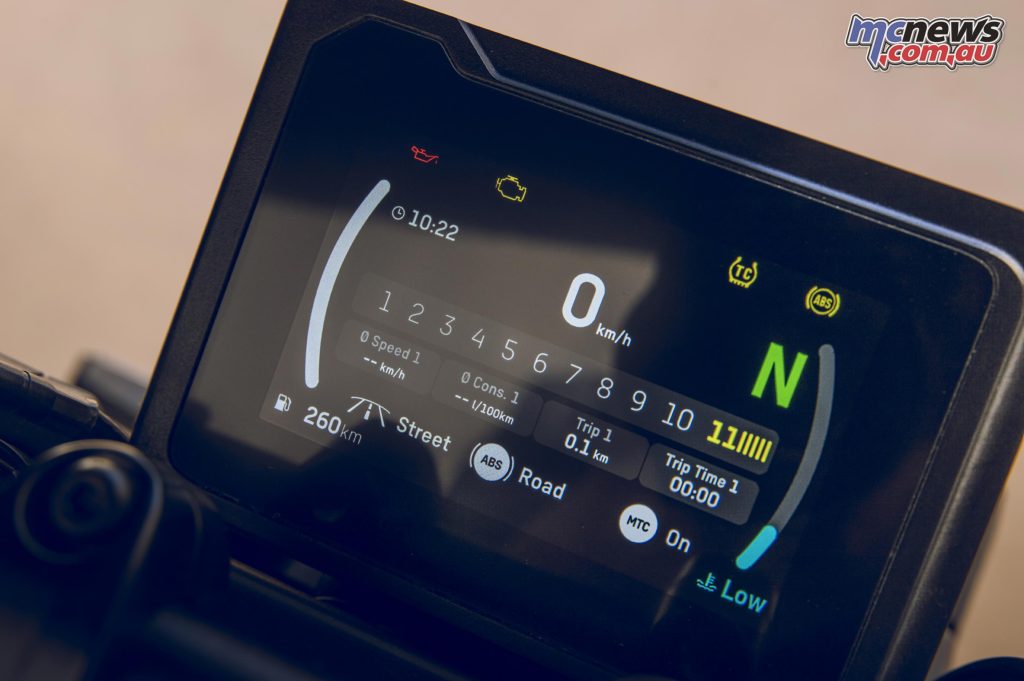
A big area of improvement is the dash, switches and electronics. A five-inch TFT dash looks the business and was very clear with no reflection issues I could spot. The switches are a bit more complex for the electronics, but that dash user interface is so easy to use and intuitive. Visual cues explain all the settings too. I’ve seen this before, but this is the best implementation, although settings aren’t as expansive as some of the bigger bikes, which obviously helps.
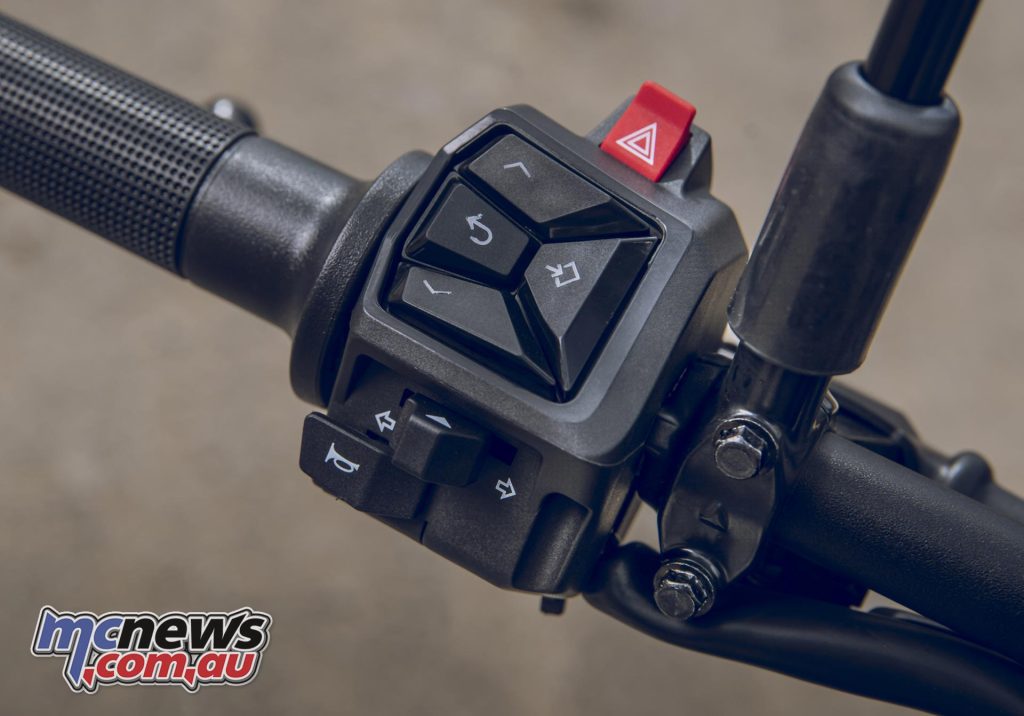
You get Road/Rain modes, cornering ABS and MTC (traction control), and phone connectivity. Keep in mind that in Australia, using your mobile through these systems as an L or P plater is totally illegal, even for Nav. Will that stop people? Probably not, but it is worthy of mentioning and obviously a high-demand feature.
A big takeaway here is the ABS Supermoto mode that deactivates the rear. The MTC, like ABS being a welcome safety net. Would I personally say I need Rain mode on a 400? Probably not, but while in earlier riding stages I can see the benefit. You’re going to make mistakes – I certainly still do – and that little help could save some skin.
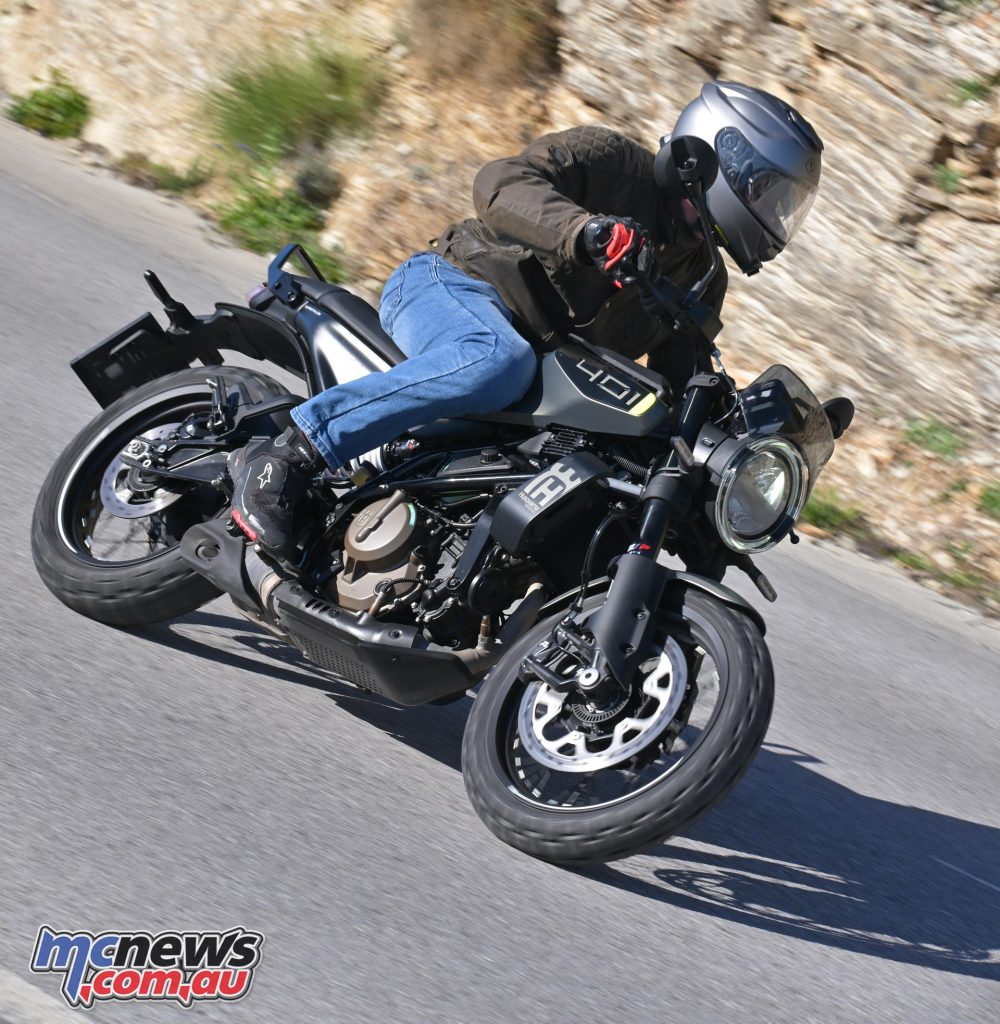
For the amazing Spanish roads, the Svartpilen 401 was a weapon, and it is hard to believe just how good the bikes are in this segment these days, led by options like these. Even when some big ADVs blasted past on the straights the Svartpilen was well suited to carving them up in the twisties, as the big bikes got out of shape trying to keep it smooth into the tighter corners. It was almost comical watching some bigger bikes seesaw on the brakes into corners, pitching forward, while the planted little 401s made it all effortless. Not a fair comparison sure, but the 401s cost 1/3 or a 1/4 of those bigger bikes!
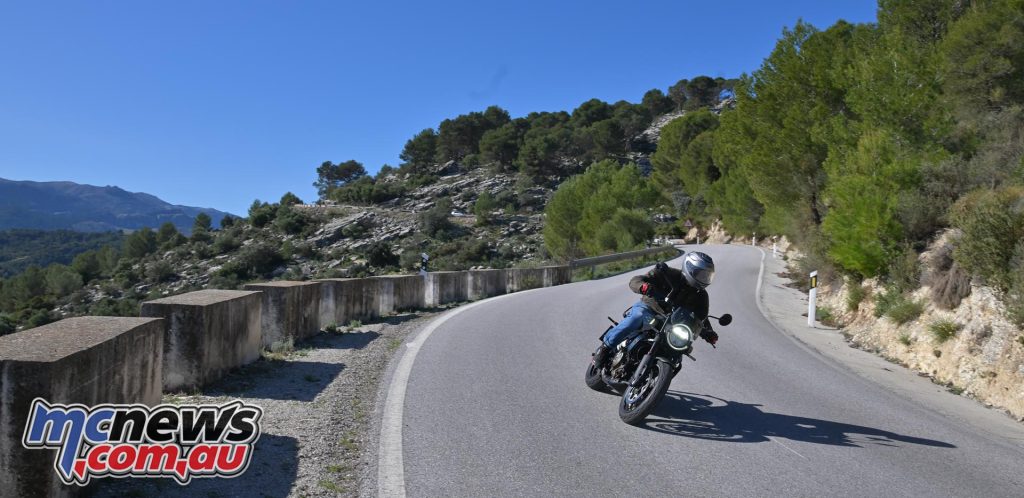
This speaks to how good these little bikes are and how that also should transfer to high confidence levels for newer riders which is all important. Wowing the riding jeans off a more experienced rider is one thing, but providing an exceptional beginner platform that’ll be rewarding long-term is probably the bigger (and generally easier) goal here.
Obviously the end result of that is of course a rewarding package for the more experienced rider who enjoys smaller bikes too. I’d say enough so that if you’ve got a first generation Svartpilen 401, and really love the bike, it’d be well worth considering upgrading to the 2024, it’s just taken things next level across the board. I’m normally pretty restrained when it comes to saying that between model updates too, but the Husqvarna has earnt it.
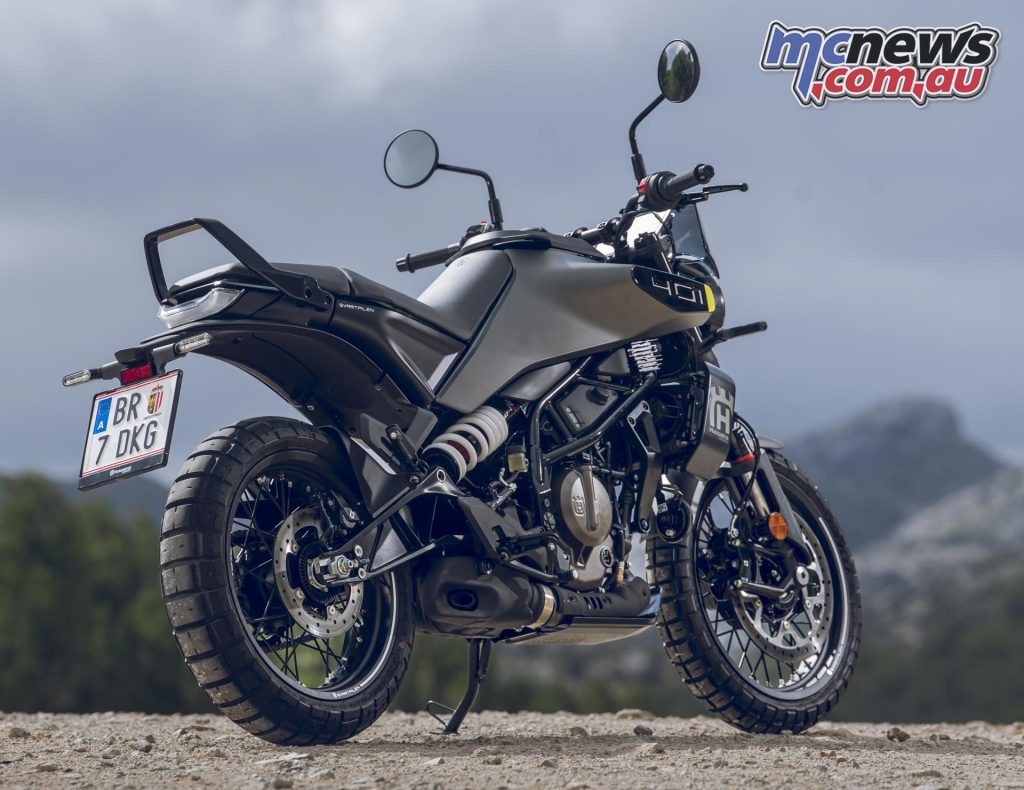
Overall I’d say the Svartpilen retains a position of dominance in this beginner 400 cc segment, combined with the welcome flexibility of being a scrambler and high tech/high spec overall loadout. The Duke is really the only bike that can totally match the 401s here and only received the adjustable suspension in 2024, after receiving a similar huge upgrade. Check out Wayne’s review from the world launch for a run-down (link).
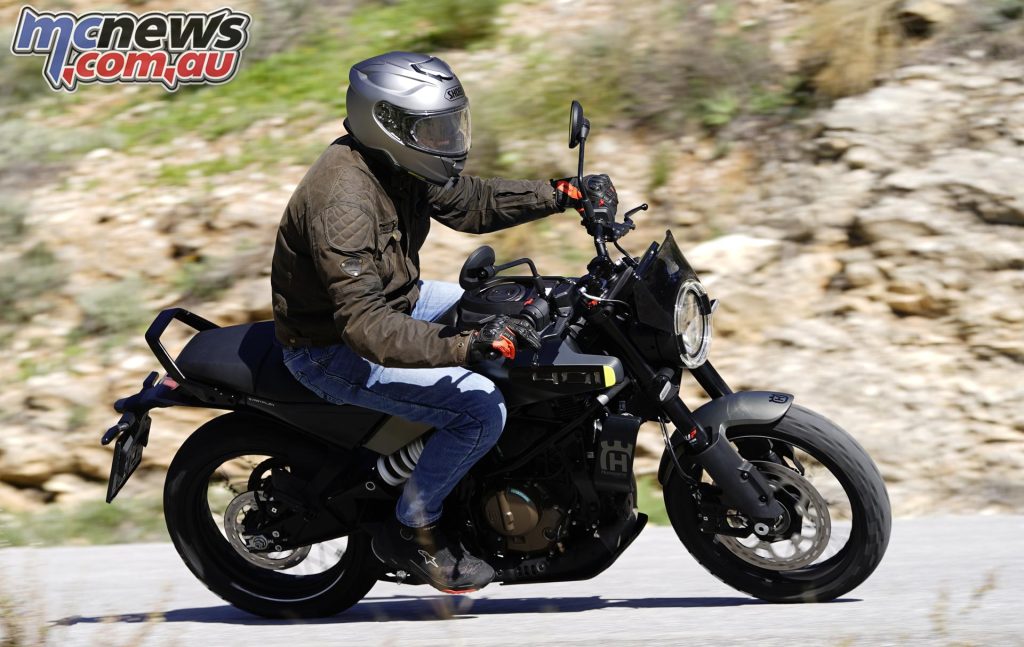
Granted, I’d like to do some more snotty Australian roads, boring traffic commuting, and a bit of gravel to see where we’ve landed on the new Svartpilen 401—the boring stuff that’ll be most people’s day-to-day —but it’s hard to imagine a better first impression.
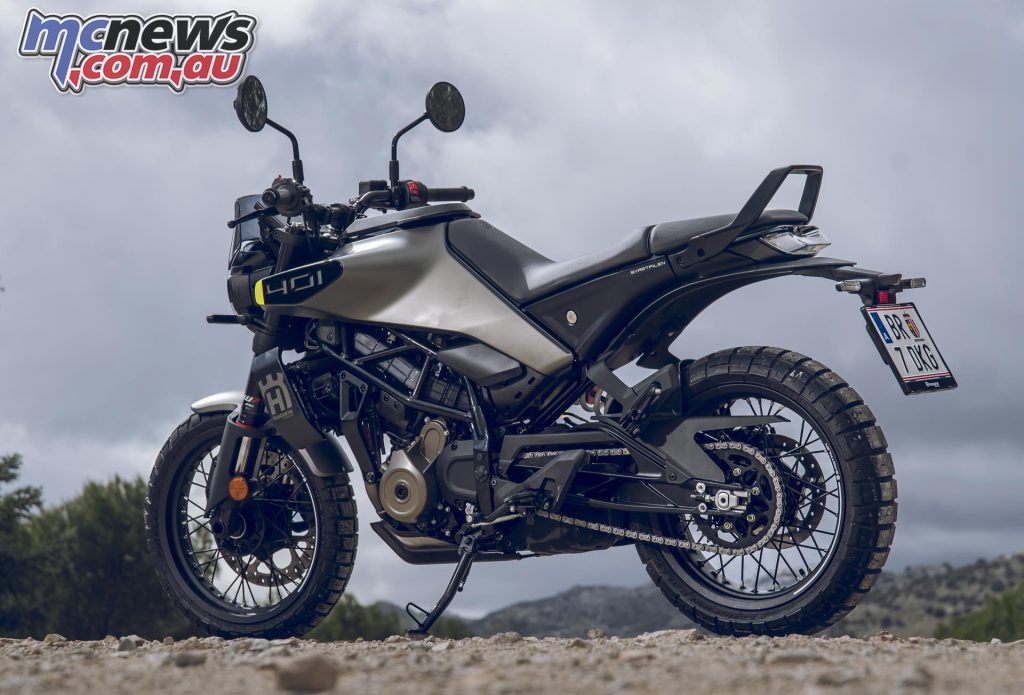
One comment I did get a few times was that people convinced the wheels are tubeless, I can confirm that is not the case. The bikes do run tubes, I guess some costs had to be saved somewhere.
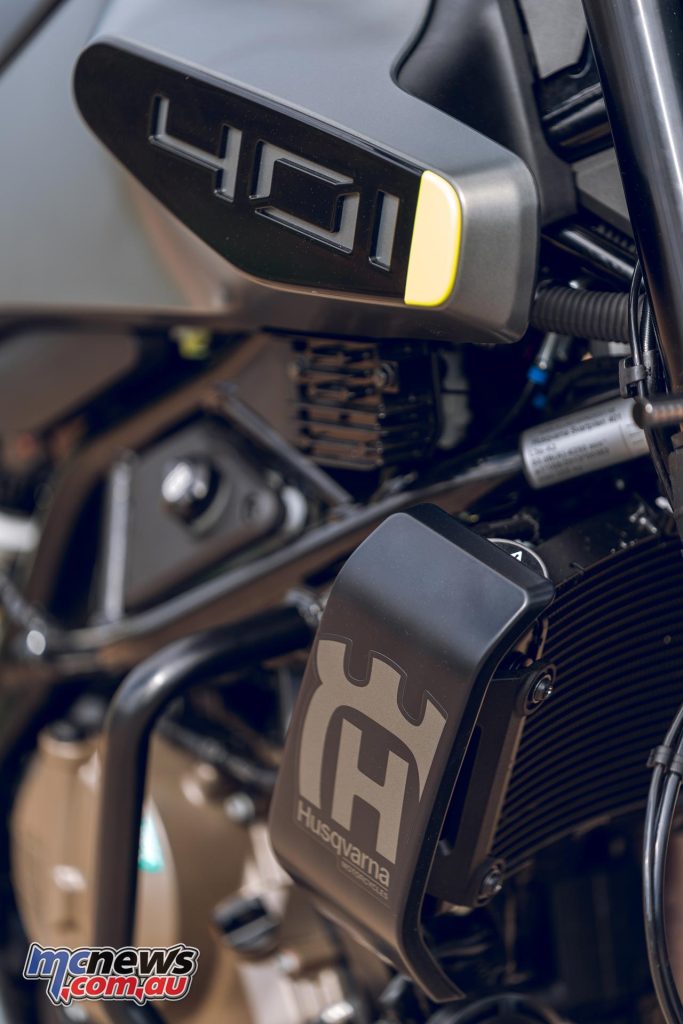
2024 Husqvarna Vitpilen 401
Where the Svartpilen 401 is very much an evolution of the same bike despite all the changes for 2024, the updated Vitpilen 401 marks a change of direction from its predecessor. I spent about 70 km on the new Vitpilen and was expecting the more roadster-themed machine to steal some of the Svartpilen’s thunder. Pure road rubber should leave the old Pirelli Rally STRs in the dust, right?
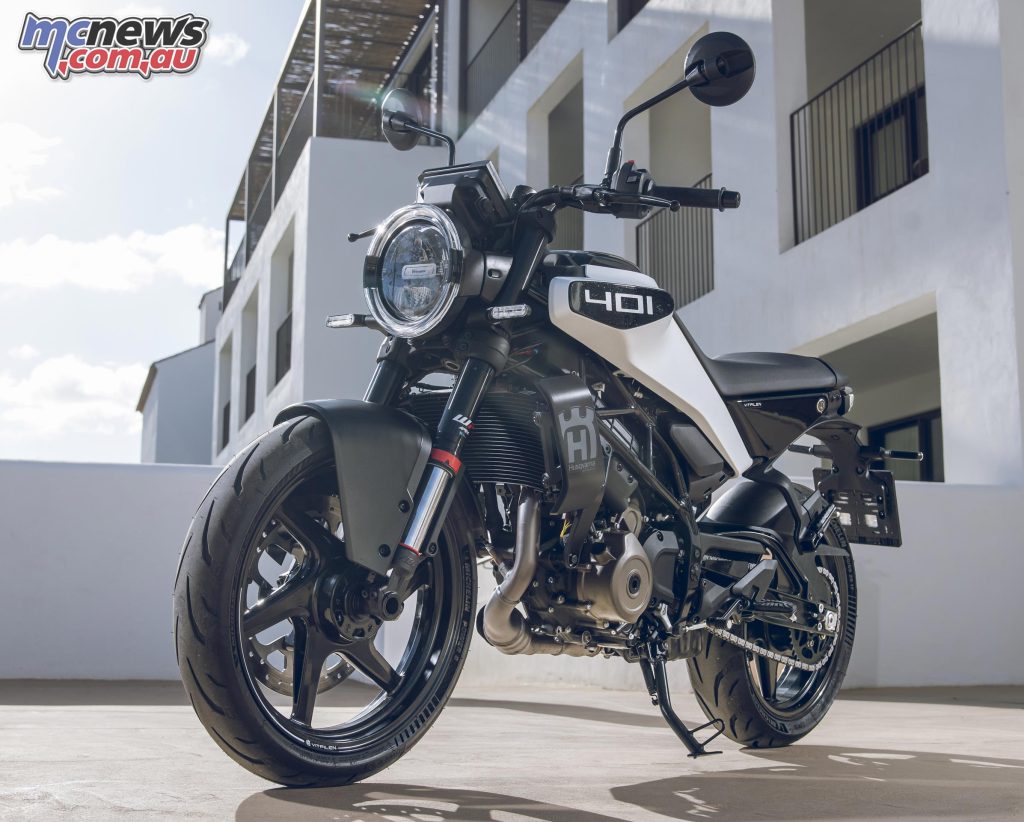
Gone are the clip-ons that made the old Vitpilen a factory cafe racer. The intent was obviously to bring this bike into an area of wider appeal. I think that’ll pay dividends, as that super committed sports riding position is losing popularity generally speaking, even in full-faired sports bikes.
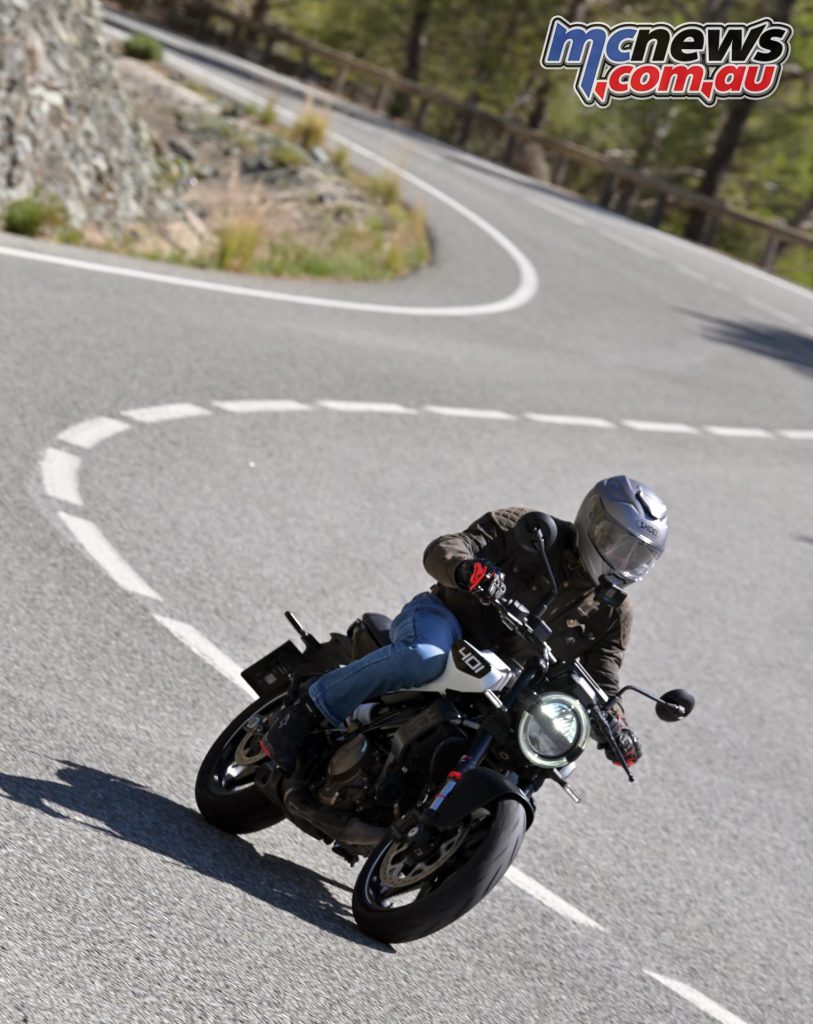
Has the bike lost a little of the unique appeal as a result? Possibly, but the Vitpilen benefits from all the same extensive updates, and is the more lithe of the two options to my eye. The weight figures reflects that too, saving 4.5 kg. Add the ‘bar end mirror accessories, and damn, is this a looker.
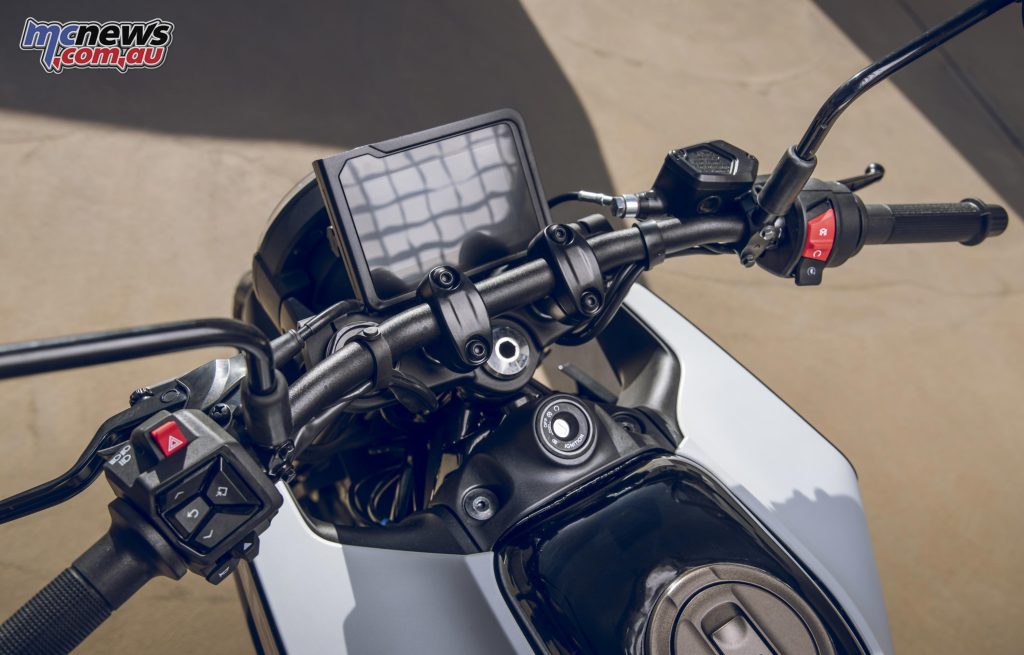
Overall, the updates leave the Vitpilen 401 much closer to the Svartpilen in 2024. Differences include bars being lower, flatter, and wider, which tweaks the ergos to upright. There are some styling tweaks, as you’ll see in the images, and obviously, the Vitpilen runs the eye-catching white tank.
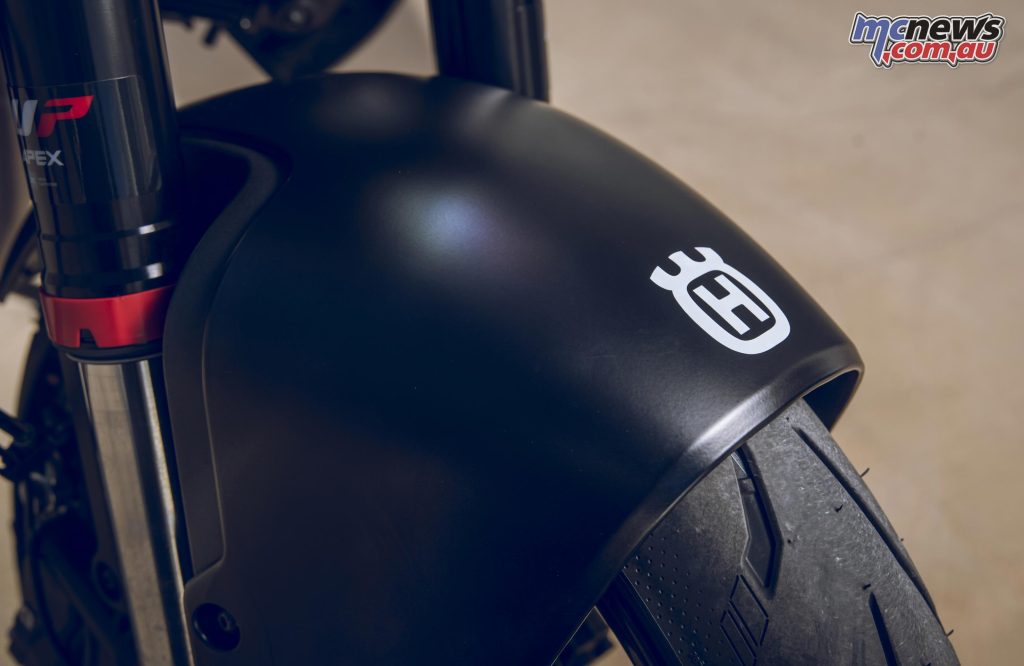
The different rubber wraps around a set of tubeless cast rims. I had to really make an effort to ensure I didn’t wear away my boots in the twisties. There’s no denying this is the duo’s ‘sportier’ machine.
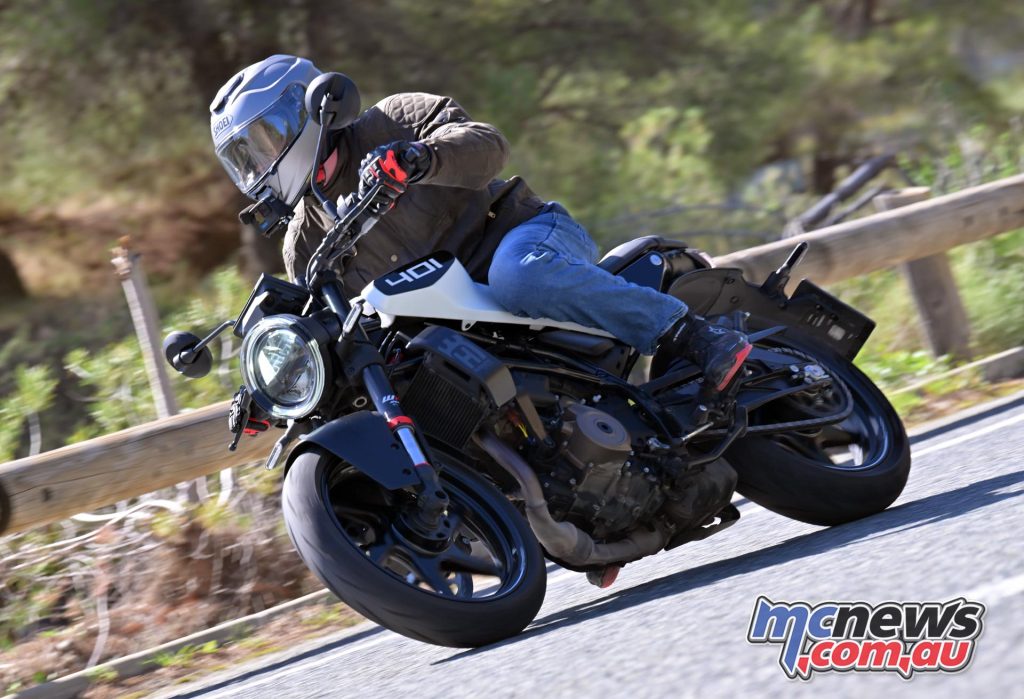
When it came to the ride, I found the Vitpilen largely mirrored its sibling, but required a bit more effort on change of directions, which was the opposite of what I expected. I had to be much more active with my inputs and moving around on the bike to get the most out of it.
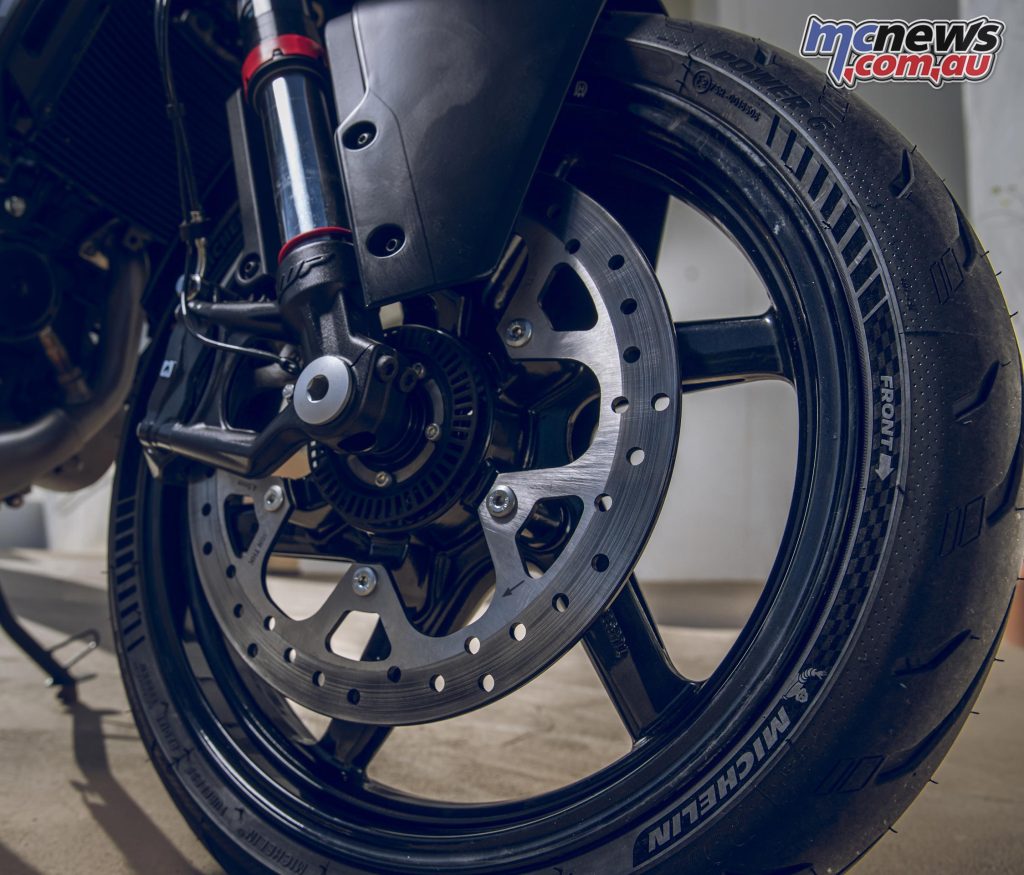
The suspension didn’t seem quite as sorted as the Svartpilen. I checked the adjusters on the clickers to make sure both bikes I rode were running the same settings – which they were.
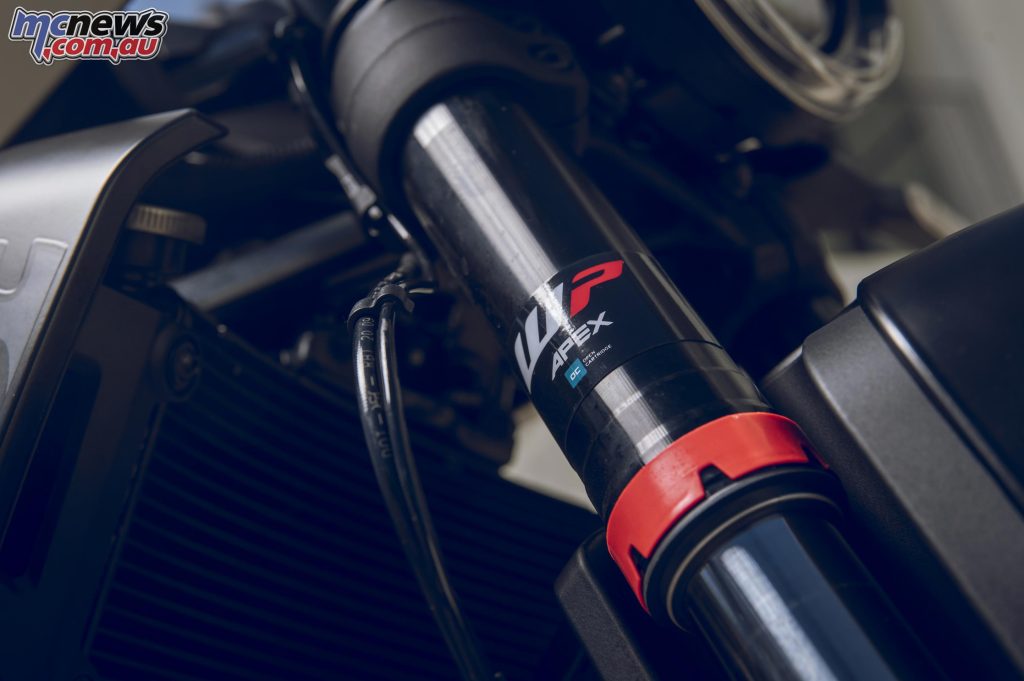
The bike felt softer, particularly the rear, which wasn’t as composed over road undulations and speed bumps, perhaps compounded by the road surfaces in the latter part of the day not being quite as perfect. To be fair though I didn’t have time at this stage to do any adjustment, with the day coming to a close and no stops to change rear pre-load, or rebound. It’d be interesting to spend a couple of days running through suspension settings on the Vitpilen to see if I could get the same feel and, with so much adjustment, especially for this class of bike, you’ve actually got that opportunity.
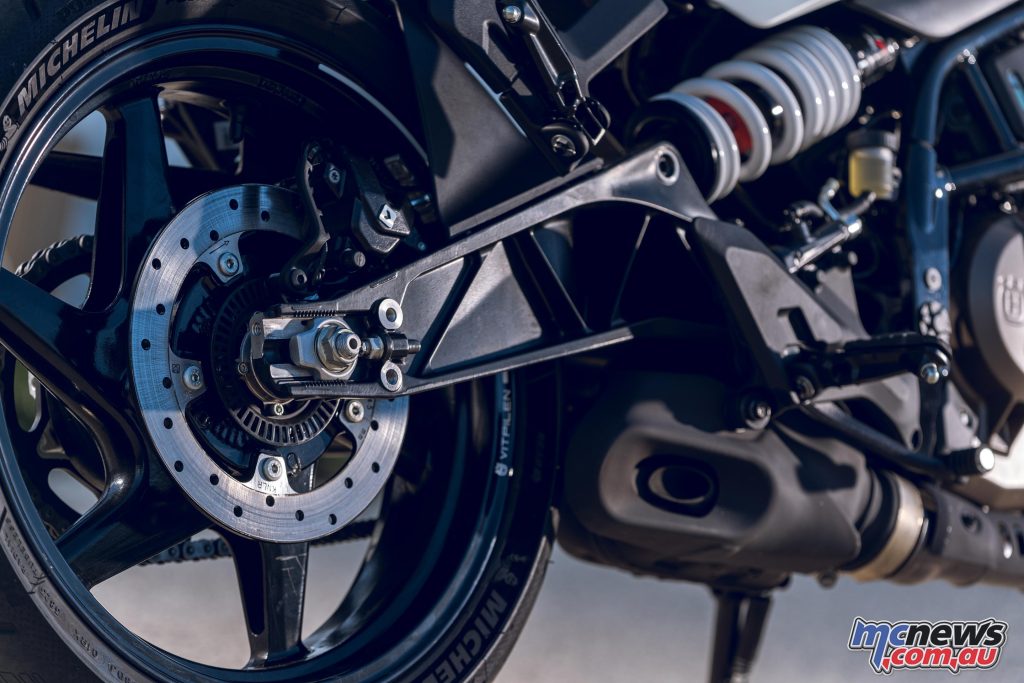
Apart from these two exceptions, though, the Vitpilen offers all the goodies of the Svartpilen in a more road-orientated option. The more time I spent in the saddle, the more things came together, so perhaps my familiarity with the Pirelli dual-purpose rubber is giving the Svartpilen an unwarranted edge in my ride impressions.
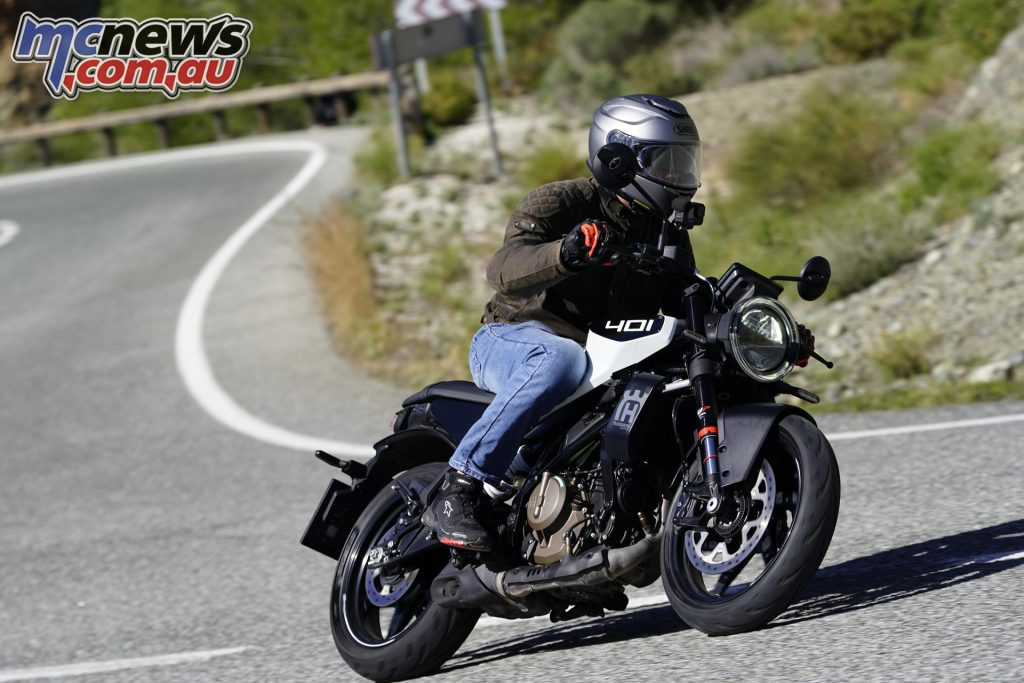
Naturally with these smaller capacity machines I’m assuming for many the use is going to be as a do-it-all, so riding rain, hail or shine is an expectation. I was just glad not to have to deal with the hail that the previous test group got hit with!
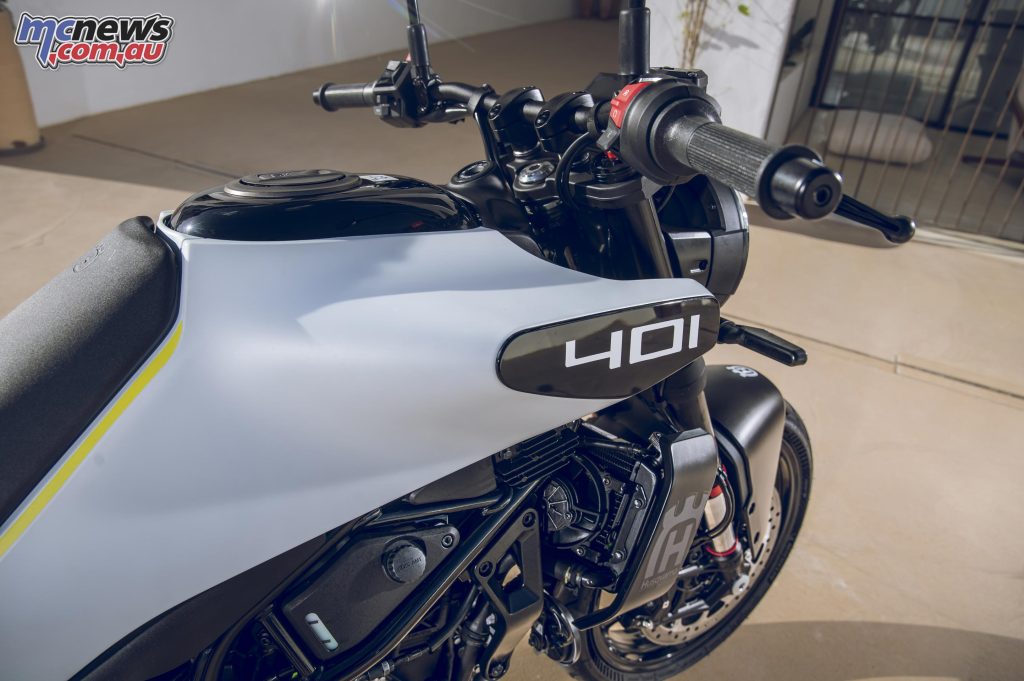
The end result of the Vitpilen 401 updates? Obviously, the bike benefits significantly from the engine, chassis, styling, and tech updates. But specifically, the Vitpilen should appeal more widely to beginner riders, with the new ergonomics being more upright and the lower seat height helping to instil confidence, both of which are exactly what you’d want. Those relaxed ergonomics also help overall comfort.
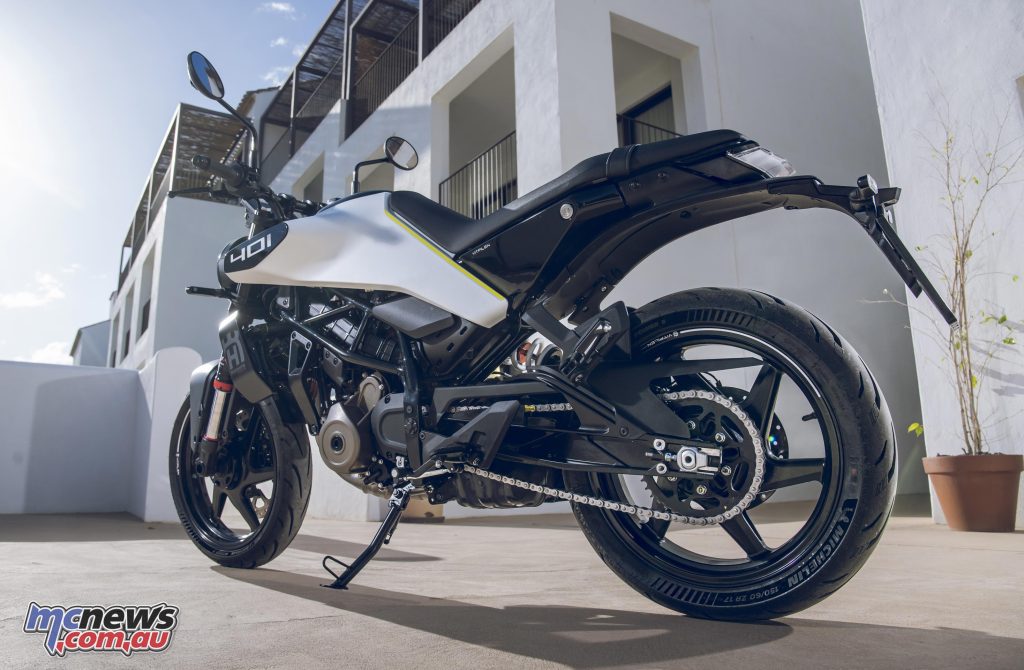
Overall, the Svartpilen 401 and Vitpilen 401 have been transformed via some very well-thought-out updates that really cover everything I could think of as an owner of the previous model, and plenty more.
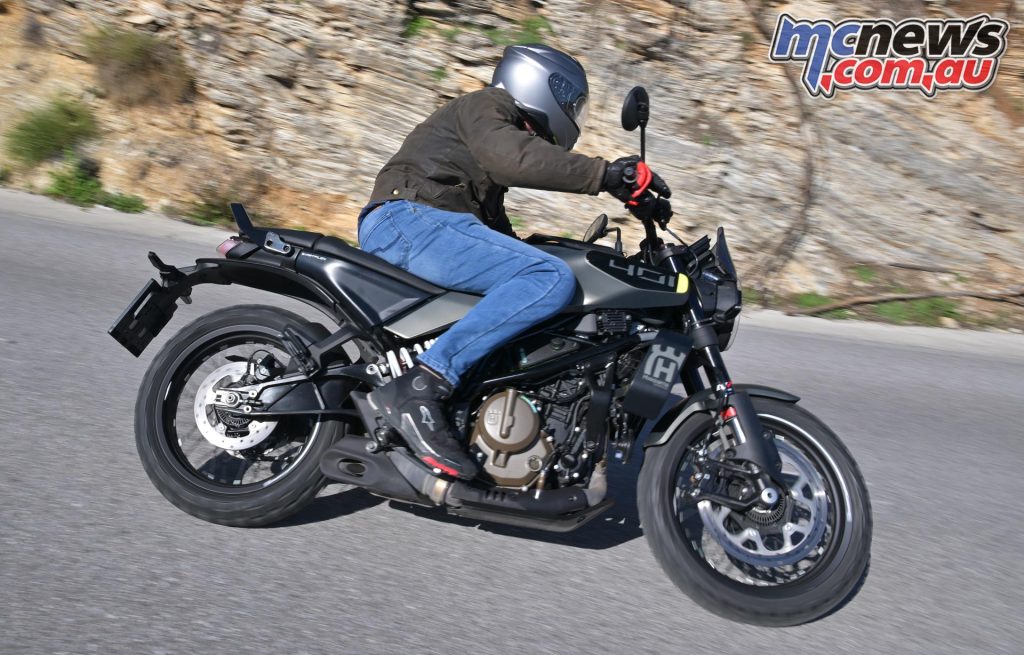
The bikes are due in July, with Australian pricing set at $8795 ride-away for both the Svartpilen 401 and Vitpilen 401. This represents a marginal increase over the outgoing models but these bikes get an impressive specifications for that price. I reckon they are worth the wait until July, if either of the two bikes catches your eye.
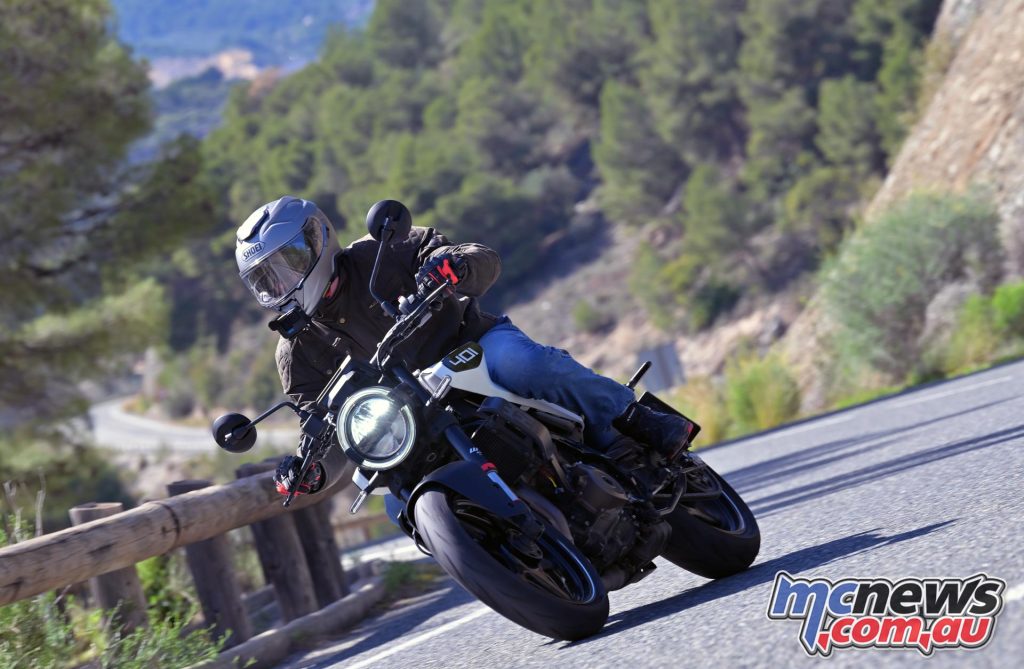
2024 Husqvarna Vitpilen & Svartpilen 401 Specifications
| 2024 Husqvarna Vitpilen and Svartpilen 401 Specifications | |
| Engine | 398.6 cc Four-stroke, single-cylinder |
| Bore x Stroke | 89 x 64 mm |
| Power | 45 hp (33 kW) |
| Torque | 39 Nm |
| Cooling – | Liquid |
| Driveline | Six-speed, slip-assist clutch, Chain |
| EMS | Bosch with RBW, Road/Rain modes, MTC (Cornering) |
| ABS | Bosch 9.3 MP (Cornering and Supermoto) |
| Front Brakes | 320 mm single disc, ByBre four-piston caliper |
| Rear Brake | 240 mm single disc |
| Front Suspension | WP Apex 43 forks, 150 mm travel, compression/rebound adjustable |
| Rear Suspension – | WP Apex Monoshock, 150 mm travel, preload/rebound adjustable |
| Ground Clearance | 180 mm |
| Seat Height | 820 mm |
| Frame | Steel trellis |
| Steering Head Angle | 66-degrees |
| Fuel Tank | 13.5 Litres |
| Weight without fuel | 154.5 kg (159 kg for Svartpilen) |
| Available | July, 2024 |
| RRP | $8795 ride-away |
2024 Husqvarna Vitpilen and Svartpilen 401 Gallery
Head to the Husqvarna Motorcycles Australia website for more information or to find a local dealership.




































































































